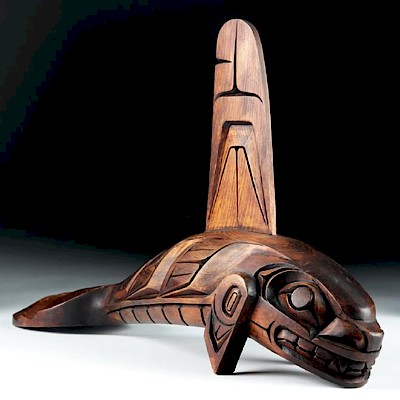Huari Textile w/ Mythical Creatures, Ex-Museum
Lot 108b
About Seller
Artemis Fine Arts
686 S Taylor Ave, Ste 106
Louisville, CO 80027
United States
Selling antiquities, ancient and ethnographic art online since 1993, Artemis Gallery specializes in Classical Antiquities (Egyptian, Greek, Roman, Near Eastern), Asian, Pre-Columbian, African / Tribal / Oceanographic art. Our extensive inventory includes pottery, stone, metal, wood, glass and textil...Read more
Estimate:
$1,000 - $1,500
Absentee vs Live bid
Two ways to bid:
- Leave a max absentee bid and the platform will bid on your behalf up to your maximum bid during the live auction.
- Bid live during the auction and your bids will be submitted real-time to the auctioneer.
Bid Increments
| Price | Bid Increment |
|---|---|
| $0 | $25 |
| $300 | $50 |
| $1,000 | $100 |
| $2,000 | $250 |
| $5,000 | $500 |
| $10,000 | $1,000 |
| $20,000 | $2,500 |
| $50,000 | $5,000 |
| $100,000 | $10,000 |
| $200,000 | $20,000 |
About Auction
By Artemis Fine Arts
May 24, 2018
Set Reminder
2018-05-24 10:00:00
2018-05-24 10:00:00
America/New_York
Bidsquare
Bidsquare : Northwest Coast, Tribal, & Pre-Columbian Art
https://www.bidsquare.com/auctions/artemis-gallery/northwest-coast-tribal-pre-columbian-art-3238
Featuring Pacific Northwest Coast Native American Art from respected collector / dealer, Joseph Alphabet. Artemis Fine Arts info@artemisfinearts.com
Featuring Pacific Northwest Coast Native American Art from respected collector / dealer, Joseph Alphabet. Artemis Fine Arts info@artemisfinearts.com
- Lot Description
Pre-Columbian, Peru, Huari/Wari culture, ca. 6th to 9th century CE. A textile woven in the slit tapestry technique depicting repeated abstract mythological beings. Its threads are vivid colors: red, ochre brown, and black with small areas of white. This was likely part of a man's tunic. Textiles were some of the most valuable items in Wari culture, and they probably exacted them as tribute from the peoples they conquered. This makes it difficult for archaeologists to identify where these beautiful objects were originally woven, because they traveled so much around the Wari Empire. It seems that Wari textiles, like those of the Inca that followed them, were woven on a wide, rectangular frame loom. They were warped on the short direction so the warp would run horizontally when worn as a tunic. Size of textile: 14" W x 9.5" H (35.6 cm x 24.1 cm); size of included original museum frame: 16" W x 12" H (40.6 cm x 30.5 cm)
This ancient textile was formerly in the museum collection of Bernard "Bud" Lueck who assembled his collection of historical objects of the Americas and founded the Heritage of the Americas Museum which is in operation today in El Cajon, California, USA.
Provenance: former Heritage of the Americas Museum which is in operation today in El Cajon, California, U.S.A and includes museum catalog ID card and museum info
All items legal to buy/sell under U.S. Statute covering cultural patrimony Code 2600, CHAPTER 14, and are guaranteed to be as described or your money back.
A Certificate of Authenticity will accompany all winning bids.
We ship worldwide and handle all shipping in-house for your convenience.
#134600Piece is a fragment as shown, with no repair or restoration and fraying at edges. Colors are very vibrant for its age.Condition
- Shipping Info
-
All shipping is handled in-house for your convenience. Your invoice from Artemis Gallery will include shipping calculation instructions. If in doubt, please inquire BEFORE bidding for estimated shipping costs for individual items.
-
- Buyer's Premium



 EUR
EUR CAD
CAD AUD
AUD GBP
GBP MXN
MXN HKD
HKD CNY
CNY MYR
MYR SEK
SEK SGD
SGD CHF
CHF THB
THB













